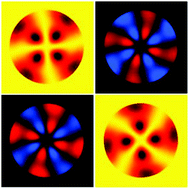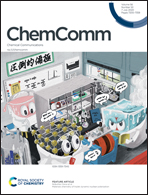Polarized light through polycrystalline vaterite helicoids†
Abstract
Vaterite helicoids [W. Jiang et al., Nat. Commun., 2017, 8, 15066] are chiral, polycrystalline suprastructures grown in the presence of the amino acids, aspartic (Asp) or glutamic (Glu) acid, that are abundant in proteins regulating biomineralization. These complex objects are composed of hexagonal vaterite nanocrystals assembled as curved-edge platelets that form chiral ensembles. The sense stacked platelets is correlated with the stereochemistry of the amino acid additive: L-Asp gives counterclockwise architectures while D-Asp gives the clockwise enantiomorphs. As new layers stack, platelets become progressively inclined with respect to the substrate suface. The growth and structure of vaterite helicoids was originally evidenced by electron microscopy and atomic force microscopy. Here, we develop an optical model for describing polarized light transmission through helicoids as measured by Mueller matrix polarimetry. The close agreement between experimental measurements and simulation confirms that the propellor-like organization of inclined platelets creates optically active structures determined by growth additive stereochemistry. The microscopy employed demonstrates the information that can be obtained by complete polarimetry using a camera as a light detector, a technique that could be applied profitably to all manner of complex structures organized from anisotropic particles.



 Please wait while we load your content...
Please wait while we load your content...